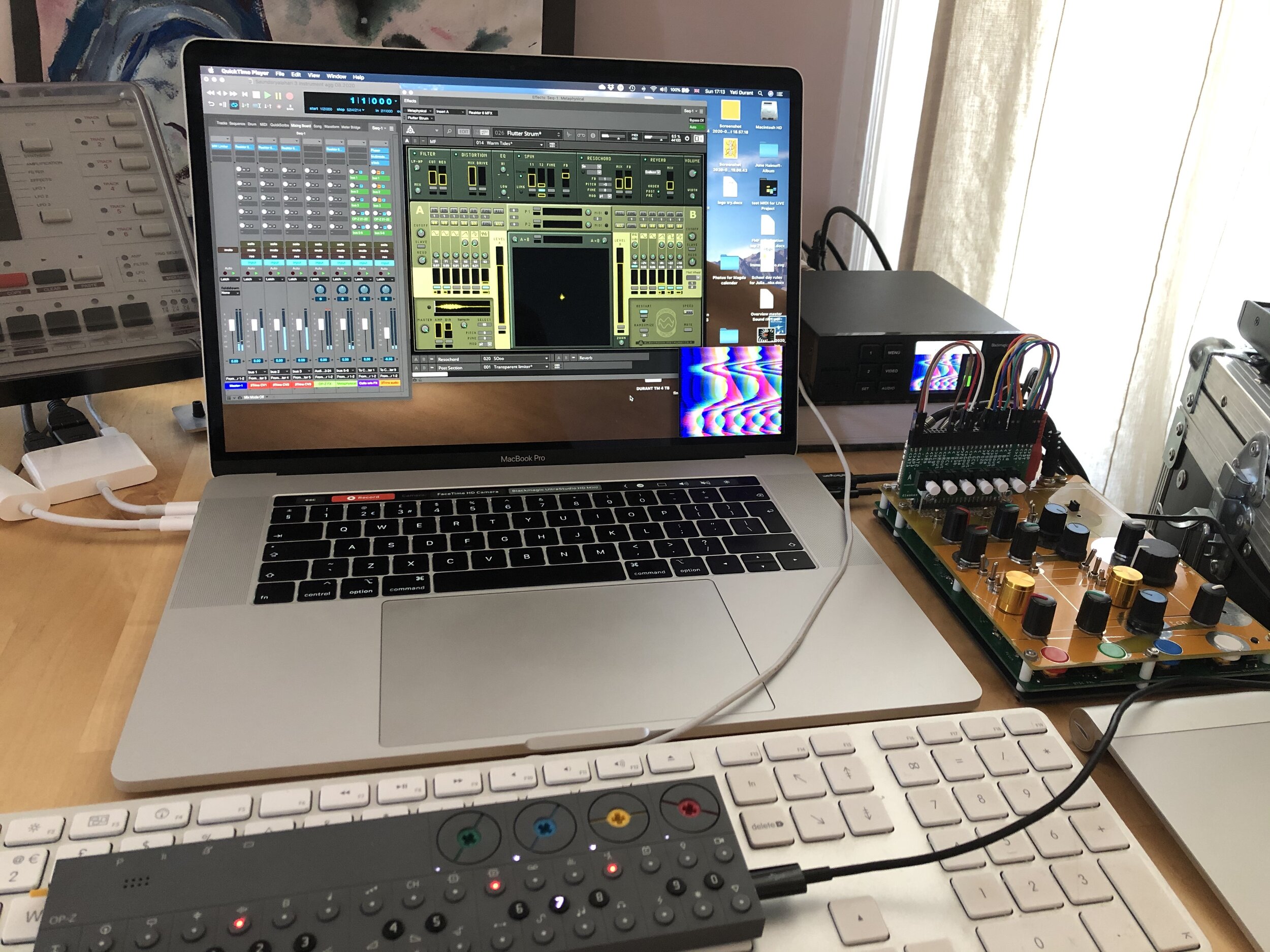I’m very pleased that Creative Scotland has awarded me with the Sustaining Creative Development fund grant to support developing Saundaryalahari 3 over the next few months. As part of this, there are several stages of development I am aiming to complete by the start of 2021.
A performance at the IMMSANE Zurich congress on 2nd October 2020 with Nicola Baroni:
Saundaryalahari 3 will have its first performance, as a duo interactive sound art performance, together with myself and the bologna-based cellist (and good friend) Nicola Baroni, at the IMMSANE Zurich congress in the University of the Arts (ZHdK) on 2nd October 2020 at 8pm. The performance will utilise a new audio/visual system (as described below) and the notated material derived from the large-orchestra version of Saundaryalahari 3 currently in composition.
The aim is to test the new system in a performance atmosphere, as well as the way the visuals affect the performance of the work. There are also plans to further perform S3 with Nicola, and other musicians, in a concert tour of Italy early in 2021.
A system for interactive reciprocal visuals:
Developing a system that, not only produces visuals to accompany sound and music, but especially, interacts with sound to CREATE visuals and thus co-compose with the live interpretation of the work, is a key goal to set for the upcoming performances of Saundaryalahari 3. I’ve made some changes to the interactive system and moved slightly away from only using Pixivisor to produce and resolve audio-visuals. The 3TrinsRGB+ visual synth, developed by Gieskes, is now a more analogue and interact visual platform that I have now included in the performance setup.
One of the interesting developments is how the 3Trins modulates its video oscillators with audio signals rather than cv signals. As with pixivisor, the system is extremely sensitive to precise system to resolve steady waveforms. Also, those audio signals are generally not tonal or compatible with tempered scales. They loosely work with certain frequencies built upon the overtone series.
So it was necessary that I improve my knowledge of Reaktor Blocks to develop a consistent series of envelope-followed oscillators to let certain factors of the performance alter the visuals - not just accompany them. The way the system works is through altering the waveforms of the oscillators, not the pitch, and sending them to the oscillators of the 3rins. With a bit of fiddling, they look very similar. Then, I can also interact with the visual synth by twisting knobs, effects - audio reactivity, etc. to provide a sort of audio/visual feedback for elements that allow improvisation in the work.
Future plans and Creative Scotland fund purchases:
The first item I purchased with the grant, was a video interface that could stream and capture performances. I purchased a Blackmagic Ultrastudio HD mini, which will allow the 3Trins to be recorded in the computer in real-time, along with an analogue mix of all the audio components for archiving. In the performance, this will allow a real-time monitor of the visual components and recording for the performance, along with an HDMI projection for the audience. So far, the quality looks great.
I’m aiming to develop different and relevant forms of visuals for future iterations of S3. Perhaps these should be more related to actual Sricakra constructions, triangles and things - I’m not entirely sure of yet - through vector-based visuals and other visual synthesisers. I’m looking at the LZX Chromagnon that promises to do a lot of this, or perhaps also a Radiator. Certainly, I will invest in a good quality projector and possibly a laser for performance.

